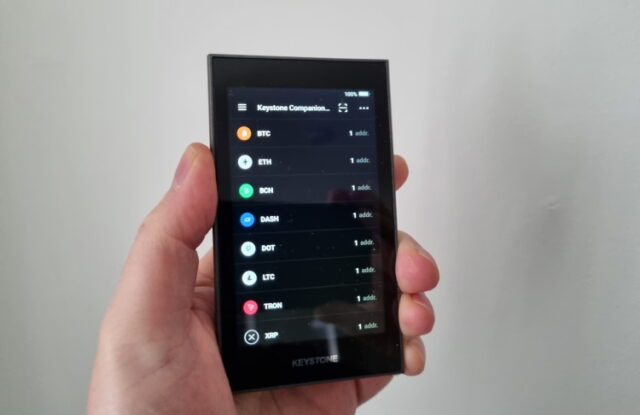As cryptocurrencies gain mainstream traction, more and more people are looking for secure ways to store their digital assets. While software wallets are convenient and often serve as the first step into crypto for many users, true long-term protection is often found in hardware crypto wallets. But how secure are these devices really? How do they work, and what methods do attackers use to try and break into them?
In this article, we’ll explore how hardware wallets are built, the types of security mechanisms they use, and the known techniques hackers employ to compromise them. We’ll also look at the most popular wallet models, highlight some notable security breaches, and share practical tips on how to use them as safely as possible.
What is a hardware crypto wallet and why is it safer than a software one?
A hardware crypto wallet is a small physical device, often USB or Bluetooth-enabled, that securely stores your private keys offline. This is the key point: your private key never leaves the device. That one fact makes these wallets significantly more secure than their software counterparts.
Most popular models on the market
-
Ledger Nano S and X – Widely used, features a robust Secure Element chip.
-
Trezor One and Model T – One of the first open-source hardware wallets.
-
Coldcard – Designed with maximum security in mind, air-gapped support and PIN pad.
-
BitBox02 – Compact, Swiss-made, open-source firmware.
-
Keystone Pro – Fully offline operation, QR-code based communication.
These wallets don’t just store your keys — they also sign transactions internally. This ensures that sensitive operations are never performed on a potentially compromised computer or mobile device.
How do these devices work under the hood?
The main purpose of a hardware wallet is to create a physically isolated and secure environment for private key management. Most of these wallets use Secure Element (SE) chips, which are designed to resist both software and physical attacks.
Key technical components
-
Secure Element chip – A tamper-resistant microcontroller optimized for cryptographic operations and secure key storage.
-
True Random Number Generator (TRNG) – Ensures the generation of truly random keys.
-
Firmware – The onboard software managing the wallet’s operation.
-
PIN code and passphrase protection – Prevents unauthorized access.
-
Secure boot process – Only verified firmware is allowed to run.
What layers of protection do they use?
Physical protection
-
Tamper-evident housing – The device casing shows clear signs if physically opened.
-
Side-channel protection – Prevents attacks based on power usage, EM emissions, or thermal output.
Cryptographic protection
-
Hierarchical Deterministic key generation (BIP32, BIP39, BIP44) – Helps in backing up and recovering wallets securely.
-
Robust encryption algorithms – Such as SHA-256, AES, HMAC.
-
Elliptic curve cryptography – Algorithms like secp256k1 and Ed25519.
Transaction handling
Instead of signing transactions on your computer or smartphone, hardware wallets sign them internally. Even if your host device is infected, your keys and transactions remain secure.
How do attackers try to compromise these wallets?
Physical attack vectors
-
Side-channel attacks – Analyze power usage or EM emissions to infer private keys.
-
Fault injection – Use laser or voltage glitching to trigger execution faults.
-
Chip decapsulation – Physically removing and analyzing the chip under a microscope.
Software-based attacks
-
Exploiting firmware vulnerabilities
-
Weak random number generation or key management
-
Malicious USB or host connections
Social engineering
-
Phishing emails or fake firmware updates
-
Impersonation of wallet apps or web interfaces
-
Seed phrase harvesting via fake recovery sites
Real-world incidents and takeaways
-
Ledger (2020) – A data breach exposed customer contact info, not the wallets themselves. Still, it led to targeted phishing campaigns.
-
Trezor (2022) – Security researchers demonstrated a memory dump attack that required physical access.
-
Coldcard – Subject to glitch attack experiments, which worked only in lab conditions with expensive equipment.
What to consider when choosing a hardware wallet
-
Buy only from reputable vendors – Preferably directly from the manufacturer.
-
Check for open-source firmware – Allows community audits.
-
Ensure presence of a Secure Element chip – Adds strong physical security.
-
Verify tamper resistance features – Reduces the risk of physical attacks.
Best practices for safe usage
-
Never store your seed phrase online or take photos of it
-
Use a passphrase alongside your seed for added security
-
Always update firmware from official sources only
-
Store backups in secure physical locations
-
Consider using metal backups instead of paper (e.g. engraved steel plates)
How are hardware wallets evolving?
-
Multisignature support – Requires multiple devices to approve a transaction.
-
Biometric authentication – Fingerprint sensors are emerging as secondary protections.
-
Quantum-resistant algorithms – As quantum computing advances, crypto will need new cryptography.
-
Smarter firmware – Better update systems and automated threat detection.
Hardware crypto wallets remain the gold standard for secure digital asset storage — but only when used correctly. As attackers grow more sophisticated, it’s essential for users to stay informed and proactive in safeguarding their crypto.
Image(s) used in this article are either AI-generated or sourced from royalty-free platforms like Pixabay or Pexels.
Did you enjoy this article? Buy me a coffee!






